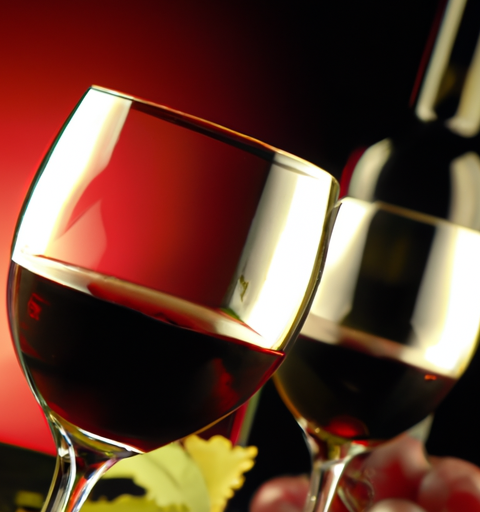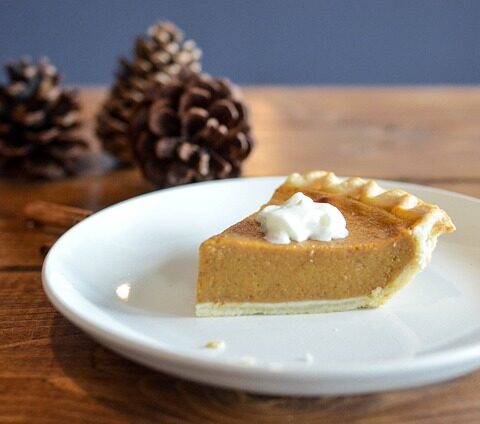So, you consider yourself a foodie, huh? Well, I’ve got a question for you – ever wondered what wine goes best with that juicy steak or that creamy pasta dish? Don’t worry, my friend, I’ve got the ultimate guide to pairing food and wine just for you! Trust me, after reading this article, you’ll be able to impress all your friends at your next dinner party with your expert knowledge on food and wine pairing.
Let’s dive right in, shall we? First things first, it’s important to understand that certain wines complement certain flavors in food, while others may clash. For example, a light and crisp white wine pairs perfectly with seafood or salads, while a full-bodied red wine is the ideal match for a rich and hearty steak. The key is to find balance and harmony between the flavors of the dish and the characteristics of the wine.
But how do you know which wine to choose? Well, my friend, fear not! In our ultimate guide, we’ll break it down for you, providing you with a comprehensive list of wine and food pairings that are guaranteed to make your taste buds dance with joy. Whether you’re planning a romantic dinner for two or a large gathering with friends, this guide will have you covered.
So, get ready to elevate your dining experience to a whole new level. Allow us to be your wine whisperers and guide you through the wonderful world of pairing food and wine. Trust me, you won’t be disappointed. Cheers to good food, good wine, and good company!

The Ultimate Guide to Pairing Food and Wine
Whether you’re a wine enthusiast or a food lover, understanding the art of food and wine pairing can enhance your overall dining experience. Pairing the right wine with the right dish can elevate the flavors and create a harmonious balance on your palate. In this ultimate guide, we will explore the essential principles of pairing food and wine, as well as dive into the regional and international pairings that have stood the test of time. So, grab a glass of your favorite wine and let’s embark on this flavorful journey together!
Why Food and Wine Pairing Matters
Food and wine pairing matters because it maximizes the enjoyment of both the food and the wine. When the flavors in the dish and the wine complement and enhance each other, it creates a truly delicious experience. The right pairing can bring out the best in both the food and the wine, intensifying the flavors and creating a symphony of taste on your palate. Whether you’re enjoying a simple weeknight dinner or hosting a special occasion, choosing the right wine to accompany your meal can take it to the next level.
How Food and Wine Interact on the Palate
The interaction between food and wine on the palate is a delicate dance of flavors and textures. When choosing a wine to pair with your meal, it’s important to consider how the characteristics of the wine will interact with the flavors, textures, and intensity of the dish. The acidity, sweetness, and weight of the wine can either complement or contrast with the flavors in the food, creating a unique sensory experience.
Essential Principles of Pairing Food and Wine
To achieve a successful food and wine pairing, there are some essential principles to keep in mind. By understanding these principles, you can make informed decisions when selecting wines to accompany your favorite dishes.
Matching Intensity and Weight
One of the fundamental principles of food and wine pairing is to match the intensity and weight of the dish with the wine. A light and delicate dish, such as a fresh seafood salad, would be best paired with a light and crisp white wine like a Sauvignon Blanc or a Riesling. On the other hand, a hearty and robust dish, like a juicy steak, would pair well with a full-bodied red wine such as a Cabernet Sauvignon or a Syrah/Shiraz.
Complementing Flavors
Pairing wine with flavors that complement each other can create a harmonious balance on the palate. For example, a buttery Chardonnay can enhance the rich flavors of creamy sauces or buttery dishes, while a fruity and spicy Zinfandel can complement the bold flavors of grilled meats or barbecue.
Balancing Acidity and Sweetness
Balancing the acidity and sweetness of the dish with the acidity and sweetness of the wine is crucial for a successful pairing. If a dish is high in acidity, like a tomato-based pasta sauce, it would pair well with a wine that has a similar acidity, such as a Sangiovese or a Barbera. On the other hand, if a dish is on the sweeter side, like a glazed ham, a slightly sweeter wine like a Gewürztraminer or a Riesling can balance the flavors.
Pairing Wine with Different Types of Food
Now that we understand the essential principles of food and wine pairing, let’s explore how these principles can be applied to different types of food.
Pairing Wine with Meats
When it comes to pairing wine with meats, it’s all about finding the right balance of flavors and textures. For red meats like beef or lamb, opt for full-bodied red wines like Cabernet Sauvignon or Malbec. These wines have enough structure and tannins to complement the richness of the meat. For lighter meats like chicken or turkey, a medium-bodied red like Pinot Noir or a crisp and fruity white like Chardonnay can be excellent choices.
Pairing Wine with Seafood
Seafood dishes can range from delicate and subtle to rich and buttery. For light and delicate seafood like grilled fish or oysters, choose a light and crisp white wine such as Sauvignon Blanc or a Chablis. If you’re indulging in a rich and buttery seafood dish like lobster or scallops, a buttery and oaky Chardonnay can enhance the flavors. For spicy seafood dishes, a slightly off-dry Riesling or a fruity and aromatic Gewürztraminer can balance the heat.
Pairing Wine with Vegetarian Dishes
Pairing wine with vegetarian dishes requires paying attention to the dominant flavors and textures of the dish. For dishes that are fresh and light, like salads or vegetable stir-fries, a light and crisp white wine such as Sauvignon Blanc or Pinot Grigio can be a great choice. If the dish is rich and savory, like a mushroom risotto, a medium-bodied red like Pinot Noir or a smooth and elegant Merlot can complement the flavors.
Pairing Wine with Spicy Foods
Spicy foods can pose a challenge when it comes to pairing wine. The heat of the spices can easily overpower the flavors of the wine. In general, off-dry white wines like Gewürztraminer or off-dry Riesling can balance the heat and provide a refreshing contrast. For red wine lovers, a fruity and low-tannin red like a Beaujolais or a chilled Gamay Noir can be a delightful pairing.
Pairing Wine with Cheeses
Pairing wine with cheese is a match made in culinary heaven. The richness and complexity of cheeses can be beautifully complemented by a carefully selected wine. For creamy and soft cheeses like Brie or Camembert, opt for a light and fruity white wine like a Chardonnay or a Sauvignon Blanc. For aged and hard cheeses like Cheddar or Parmesan, a bold and robust red wine like a Cabernet Sauvignon or a Syrah/Shiraz can provide a perfect balance.
Pairing Wine with Desserts
Dessert wines are specifically crafted to complement the sweet flavors of desserts. When pairing wine with desserts, it’s essential to match the sweetness levels. For fruity and light desserts like fruit tarts or sorbets, opt for a sparkling wine like a Prosecco or a Moscato d’Asti. For rich and chocolatey desserts like dark chocolate cake or flourless chocolate torte, a fortified wine like a Port or a sweet red like a late-harvest Zinfandel can enhance the flavors.
Regional Pairings: Exploring Traditional Matches
Now that we’ve covered the essential principles and the different types of food pairings, let’s take a journey through some traditional regional pairings that have been enjoyed for centuries.
French Cuisine and Wine Pairings
France is renowned for its cuisine and its wines, and the two complement each other beautifully. Classic French dishes like Coq au Vin or Boeuf Bourguignon are traditionally paired with a Burgundy or a Bordeaux, both of which have the structure and complexity to stand up to the rich flavors. For a lighter French dish like Ratatouille or a creamy Camembert, a crisp and fruity white wine like a Sancerre or a Chablis can be an excellent match.
Italian Cuisine and Wine Pairings
Italian cuisine is incredibly diverse, but there are some classic pairings that have become iconic. Pasta dishes like Carbonara or Bolognese are traditionally paired with Chianti or a Sangiovese-based wine. For a pizza night, try pairing your favorite slice with a fruity and medium-bodied Barbera or a bold and spicy Primitivo. And of course, no Italian meal is complete without some Parmesan cheese, which pairs beautifully with a full-bodied and bold red like Barolo or Amarone.
Spanish Cuisine and Wine Pairings
Spanish cuisine is known for its bold flavors and robust spices. Paella, a quintessential Spanish dish, pairs well with a fruity and aromatic white wine like Albariño or Verdejo. For Spanish tapas, which can range from spicy chorizo to rich and savory croquettes, a medium-bodied and versatile red like a Rioja or a Tempranillo can be a delightful choice. And don’t forget the traditional pairing of Manchego cheese with a glass of intense and flavorful Sherry.
Asian Cuisine and Wine Pairings
Asian cuisine is incredibly diverse and offers a wide range of flavors, spices, and textures. When it comes to pairing wine with Asian dishes, the key is to find balance and contrast. For delicate and subtle flavors like sushi or sashimi, a light and crisp white wine like a Riesling or a Sauvignon Blanc can enhance the experience. For spicy dishes like Thai curry or Szechuan stir-fry, an off-dry and aromatic Gewürztraminer or a sparkling wine like a Cava can provide a refreshing contrast.

Exploring Wine Varieties and Their Perfect Pairings
Now, let’s delve into the world of specific wine varieties and explore their perfect pairings. Whether you have a favorite wine or you’re looking to discover something new, this exploration will guide you in finding the perfect pairing for your next meal.
Cabernet Sauvignon
Cabernet Sauvignon, known for its full-bodied and bold flavors, pairs well with rich and robust dishes. Enjoy a glass of Cabernet Sauvignon with a juicy steak or a char-grilled burger for a match made in culinary heaven. The tannins in the wine help cut through the richness of the meat, creating a harmonious balance on your palate.
Chardonnay
Chardonnay, a versatile white wine, can be paired with a wide range of dishes. A buttery and oaky Chardonnay complements seafood dishes like lobster or scallops, while a crisp and fruit-forward Chardonnay pairs well with chicken or pasta dishes. The flavors of Chardonnay can be beautifully enhanced by dishes with creamy sauces or buttery flavors.
Pinot Noir
Pinot Noir is a light to medium-bodied red wine with delicate and complex flavors. It pairs well with a variety of dishes, from roasted chicken and grilled salmon to mushroom risotto and lamb chops. The versatility of Pinot Noir allows it to shine alongside a wide range of foods, making it a go-to choice for many wine enthusiasts.
Sauvignon Blanc
Sauvignon Blanc, known for its bright and refreshing flavors, pairs well with lighter dishes and fresh ingredients. Enjoy a glass of Sauvignon Blanc with a fresh seafood salad, goat cheese, or grilled vegetables for a delightful pairing. The citrusy and herbaceous notes in the wine can enhance the flavors of these dishes, providing a crisp and refreshing experience.
Merlot
Merlot, a medium to full-bodied red wine, pairs well with a variety of dishes. Its smooth and velvety texture makes it an excellent choice for pairing with roasted meats, like roast beef or pork tenderloin. Merlot also complements dishes with tomato-based sauces or earthy flavors, making it a versatile and enjoyable option.
Riesling
Riesling is a white wine known for its vibrant acidity and fruity flavors. It pairs well with a variety of dishes, from spicy Asian cuisine to fresh and light seafood. The sweetness in some Rieslings can also complement spicy dishes, providing a refreshing balance. Whether you prefer a dry or off-dry Riesling, there is a perfect pairing waiting to be discovered.
Syrah/Shiraz
Syrah/Shiraz, a full-bodied red wine, is known for its bold and spicy flavors. It pairs well with grilled meats, barbecued ribs, and other dishes with bold and robust flavors. The smoky and peppery notes in Syrah/Shiraz can complement the charred flavors of grilled foods, creating a memorable dining experience.
Zinfandel
Zinfandel, a fruity and medium to full-bodied red wine, pairs well with a variety of dishes. Its versatility allows it to be enjoyed with anything from barbecue to Italian cuisine. Pair a glass of Zinfandel with a juicy burger, spaghetti Bolognese, or a spicy sausage pizza for a delightful and flavorful experience.
Tips and Tricks for Successful Pairings
Now that you’re equipped with the essential principles of food and wine pairing and have explored various regional and international pairings, here are some additional tips and tricks to ensure successful pairings every time.
Consider the Sauce or Seasoning
When pairing wine with a dish, consider the sauce or seasoning used. A rich and creamy sauce might call for a full-bodied white or a medium-bodied red, while a dish with citrusy or tangy flavors might pair well with a crisp and refreshing white wine.
Experiment with Contrasting Pairings
While complementing flavors is important in pairing, don’t be afraid to experiment with contrasting pairings as well. Sometimes, the unexpected combinations can create exciting and memorable experiences. Pairing a spicy dish with a slightly sweet wine or a rich and creamy dessert with a sparkling wine can yield delightful surprises.
Browse Wine and Food Pairing Charts
If you’re new to food and wine pairing or looking for inspiration, browse wine and food pairing charts. These charts provide recommendations based on the characteristics of the wine and the flavors of the food, helping you make informed decisions when selecting the perfect pairing.
Understanding Wine Labels and Terminology
Understanding wine labels and terminology can be intimidating, but it’s essential for making informed decisions when selecting wines. Here are some key concepts to help you navigate the world of wine.
Interpreting Wine Labels
Wine labels can provide valuable information about the wine, including the grape variety, the region, and the producer. Understanding the different terms and symbols on the label can help you choose wines that suit your taste preferences.
Grapes and Varieties
The grape variety used to make the wine can have a significant impact on its flavor profile. Some well-known grape varieties include Cabernet Sauvignon, Chardonnay, Pinot Noir, Sauvignon Blanc, Merlot, Riesling, Syrah/Shiraz, and Zinfandel, among many others. Understanding the characteristics of different grape varieties can help you find wines that align with your preferences.
Appellation and Origin
The appellation or origin of a wine refers to the specific geographic region where the grapes were grown. Different regions have different climates, soils, and winemaking traditions, which can influence the flavors and characteristics of the wine. Some famous wine regions include Bordeaux, Napa Valley, Tuscany, Rioja, and Marlborough.
Reserve, Estate, and Other Classifications
Wines may have additional classifications, such as Reserve, Estate, or Grand Cru, which indicate a certain level of quality or production method. These classifications can vary depending on the country and the region, so it’s important to research the specific classifications used in the wine you’re interested in.
Tasting and Describing Wine
Tasting and describing wine can be a subjective experience, but there are common terms and descriptors used to convey the characteristics of the wine. These can include terms like fruity, oaky, acidic, tannic, or dry. Developing your palate and becoming familiar with tasting notes can help you better understand and appreciate the wines you enjoy.
Serving and Storing Wine for Optimal Pairing
Serving and storing wine properly is crucial for enjoying it at its best. Here are some tips to ensure your wine is served and stored correctly.
Ideal Serving Temperatures
Different types of wine have different ideal serving temperatures. Generally, white wines should be served chilled, while red wines should be served at slightly cooler than room temperature. Sparkling wines should be served well chilled. It’s important not to overchill or overwarm the wines, as extreme temperatures can mute or alter the flavors.
Decanting and Aeration
Decanting and aerating wine can enhance its flavors and aromas. Decanting is particularly beneficial for older red wines that may have sediment. Pouring the wine into a decanter separates it from the sediment and allows it to breathe. Aeration with a wine aerator or simply letting the wine breathe in the glass can also help open up the flavors and aromas.
Wine Storage Basics
Proper wine storage is essential for maintaining its quality over time. Wine should be stored in a cool, dark, and relatively humid environment. Avoid storing wine in direct sunlight or in places with significant temperature fluctuations. Wine should be stored horizontally to keep the cork moist and prevent it from drying out.
The Impact of Wine Glasses on Pairing Experience
The choice of wine glass can have a surprising impact on the overall pairing experience. Here are some factors to consider when choosing the right wine glass.
Choosing the Right Wine Glass
Choosing the right wine glass depends on the type of wine you’re serving. Different shapes and sizes of glasses can enhance the flavors and aromas of the wine. For example, a balloon-shaped glass with a wide bowl is ideal for red wines, as it allows for aeration and enhances the complex aromas. On the other hand, a fluted glass is ideal for sparkling wines, as it preserves the bubbles and concentrates the aromas.
The Effects of Shape and Size
The shape and size of the wine glass can impact the way the wine is perceived on the palate. A larger bowl allows for more aeration and can enhance the aromas, while a narrower rim can concentrate the flavors on the front of the palate.
Other Factors to Consider
Other factors to consider when choosing a wine glass include the material (glass or crystal), the stem (which prevents your hand from warming the wine), and the overall aesthetics of the glass (as presentation can influence the enjoyment of the wine).
Conclusion
Congratulations! You’ve now become well-versed in the art of food and wine pairing. By understanding the essential principles and exploring various regional and international pairings, you can now confidently select the perfect wine to complement your favorite dishes. From classic French cuisine to iconic Italian flavors, the world of food and wine awaits your continued exploration and enjoyment. So, the next time you sit down for a meal, remember to uncork a bottle of wine and savor the experience. Cheers to achieving perfect harmony in food and wine pairing!






